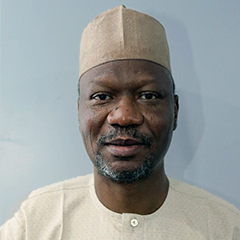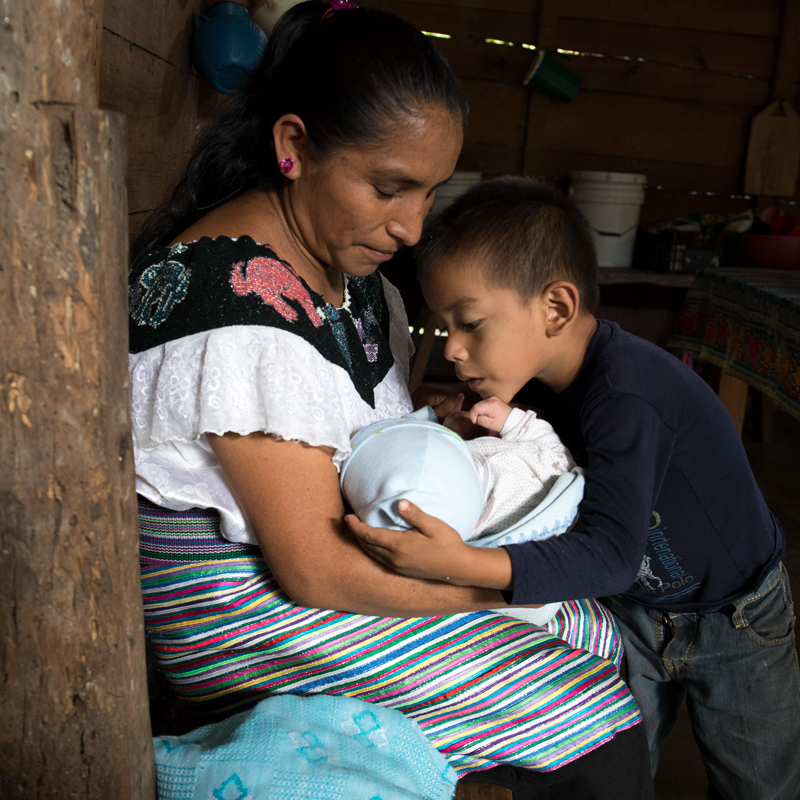Kole Shettima, director of MacArthur's Africa office, discusses steps to prevent maternal mortality in Nigeria.
Motherhood is not a disease, but unlike fatherhood it kills, so said a wise person. May 22 of every year is marked as Safe Motherhood Day to celebrate and remember the agony of pregnant women. World wide about 500,000 women die annually due to childbirth.
Of all health indicators, maternal health disparity between the industrialized and least developed countries is the most graphic. In least developed countries child mortality is 25 times higher, HIV prevalence is 10 times higher but maternal mortality is 50 times higher. The risk of a mother dying during childbirth is 1 in 13 in Nigeria compared to 1 in 2,800 in developed countries.
Maternal death has continued despite continental and international commitments. Twenty years ago, the international community met in Nairobi to launch the Safe Motherhood Initiative. Reduction of maternal deaths was reiterated at the World Summit for Children, the Cairo and Beijing conferences and most recently the Millennium Summit. Presidents and Heads of Governments adopted the Millennium Declaration which committed signatories to reduce maternal mortality by two-third by 2015. First Ladies of West and Central African Ladies met in Bamako in 2001 to pledge the reduction of maternal death by 50 percent by 2010. In October this year the international community will gather in London to reflect on the commitments made in Nairobi 20 years ago. Certainly progress toward reduction of maternal mortality has been recorded but much more needs to be done.
Social scientists working on the subject of agenda setting have been intrigued by why and how some issues come to dominate the political agenda. What makes it possible for policy makers to be suddenly interested in an issue which hitherto they ignored? Apparently the existence of a problem does not spur action. For example, maternal death which is the greatest disparity between rich and poor countries of all indicators used to compare levels of development/wellbeing but funding by international agencies has dried -up.
At the MacArthur Foundation, we have supported research on understanding the issue of making maternal health a political priority. The medical causes of maternal death are well understood, and lives saving interventions to avert maternal death exist. A World Bank study in 2003 concluded that mortality can be halved in developing countries every 7-10 years "regardless of income level and growth rate". In specific terms, Thailand reduced its maternal mortality ratio by three-quarters in 18 years while Malaysia and Sri Lanka reduced theirs by more than 50 percent over 25 years. What seems to be lacking is the political will to make maternal death history. How can we generate the political will to avert maternal death?
Nigeria is 2 percent of the world's population but carries the burden of 10 percent of its maternal death. About 52,000 women die every year, which translate to about 142 women dying every day. To bring the point more closely, it is the equivalent of two EAS flight crashes every day. There is a regional variation in maternal death with highest number in the North East Zone. Similarly, there is a significant difference between rural and urban areas, and the majority of maternal death occurs in rural areas. In addition, for every maternal death, at least thirty women suffer short to long term disabilities such as vesico vaginal fistulae.
The five major causes of maternal death in Nigeria are hemorrhage, infection, unsafe abortion, eclampsia and obstructive delivery.
There are three types of delays that lead to maternal death. Type 1 delay is the inability of women to visit health facilities at the community level due to reasons such as poverty and cultural and traditional practices that discourage or prevent them from seeking health care. Type 2 delay is the lack of transport services or poverty that makes it difficult for women to travel to a health facility. Type 3 delay is the lack of adequate services such as personnel and equipment in a health facility. Attitude of health workers is an important aspect of Type 3 delay.
What actions could be taken by governments and politicians to improve the health seeking behavior of communities? There are models of community mobilization that has worked well in maternal health projects as well as in other services. Civil Society Organizations (CSOs) have improved the health seeking behavior of communities through the formation of Fathers Club, Mothers Club, Peer Educators and Association of Traditional Birth Attendants. They have also worked positively with community gatekeepers such as traditional and religious authorities and mothers- in-law and fathers in-law. Getting the support of men is imperative. For example, in Minjibir members of the Fathers Club decided to sell the goat of a husband to pay for the transport of his wife to go to hospital when he refused to do so. In either case, governments are able to mobilize communities when they are determined to do so for activities such as census and registration of voters. Also, politicians are able to mobilize communities to vote for them during elections time. Similar strategies could be used to enable women visit health facilities.
Making maternal health services free will remove a significant barrier for women and communities. Evidence from Kano buttresses the point. Antenatal attendance, delivery at facilities and caesarian operations improved following the introduction of free maternal health service in 2001. Also, there was a marked reduction of fatalities as percentage of deliveries. Antenatal visits in 28 hospitals increased from 303, 649 in 2001 to 702,720 in 2005 and deliveries increased from 29, 704 to 39,926 during the same period. At the Murtala Mohammed Specialist Hospital, deliveries increased from 5, 234 in 1999 to 12,473 in 2005 while case fatality as a percentage of deliveries decreased from 7.9 percent to 3.7 percent in the same period.
The Federal Government should be commended for the recent announcement of free maternal and under- five care at all tertiary institutions. The total cost is estimated to be about N5.5 billion per annum. The merger of the National Primary Health Care Development Agency and the National Program on Immunization are steps in the right direction. So also is the recommendation to enlist midwives and nurses in a compulsory one year National Youth Service Corp. This effort will ensure the much desired skilled attendance at birth. Primary health care centers employ only 12 percent of medical doctors.




